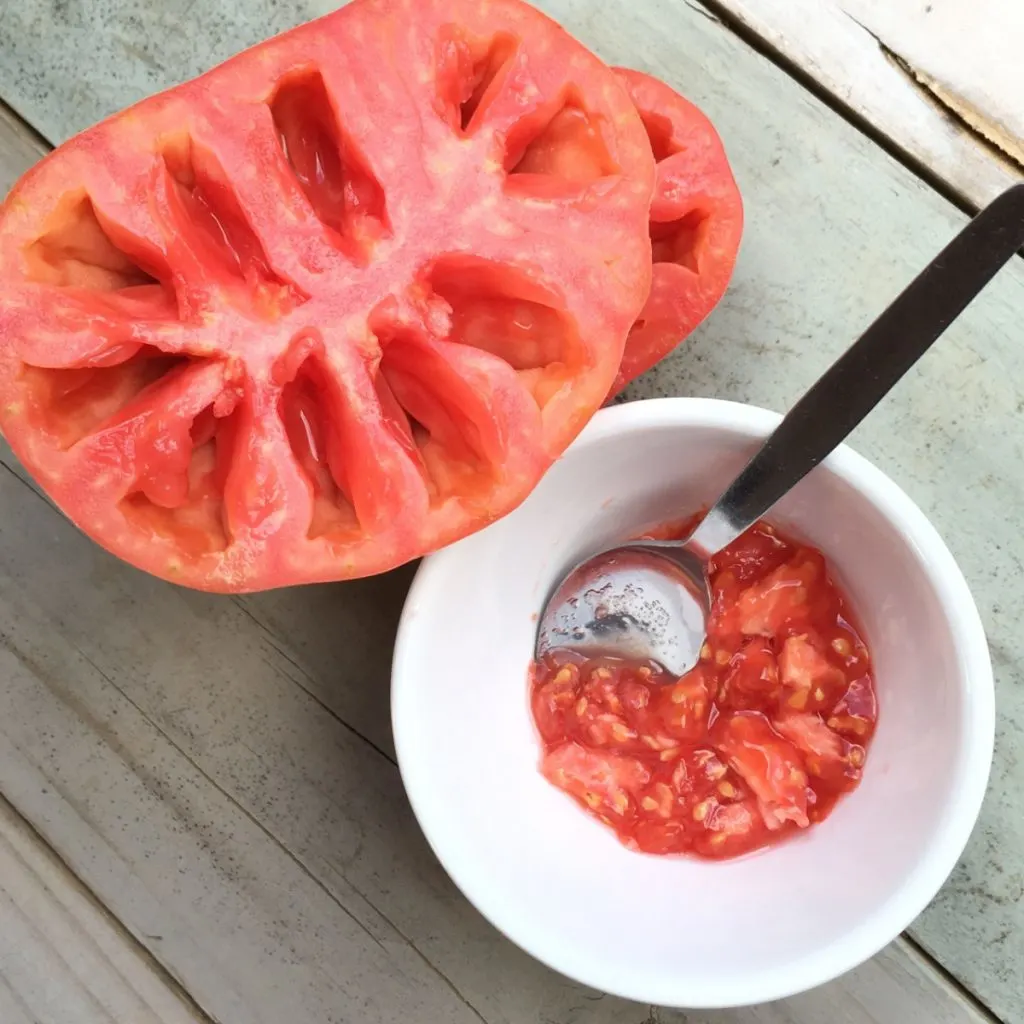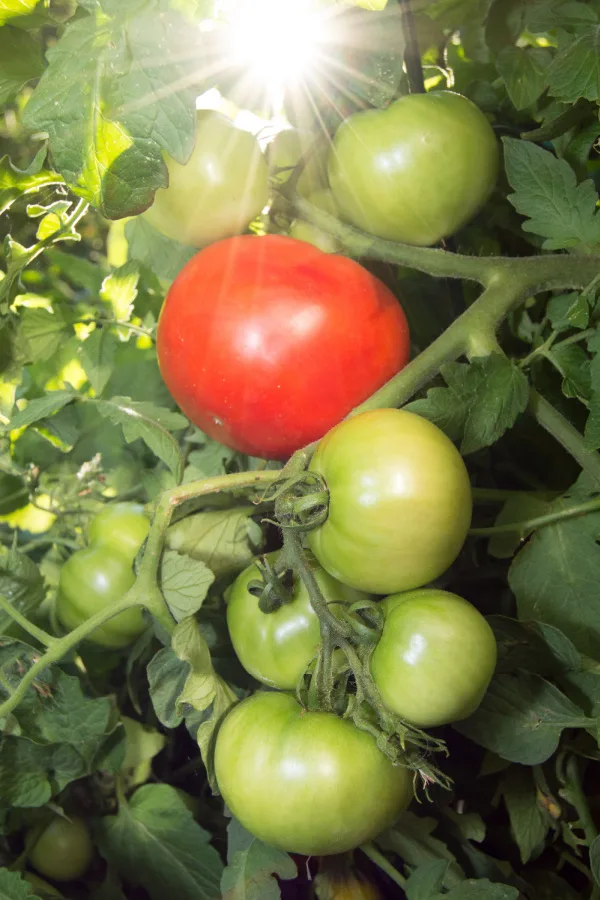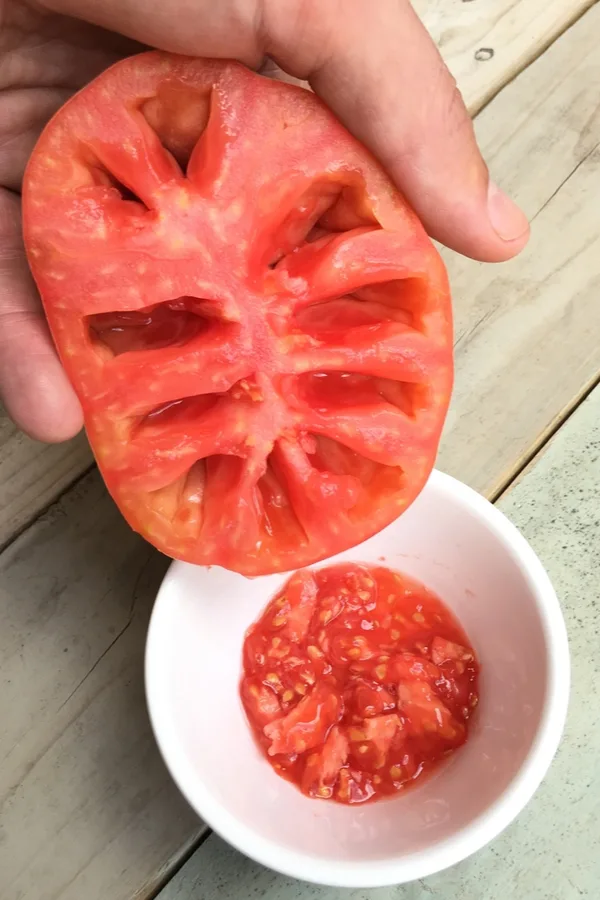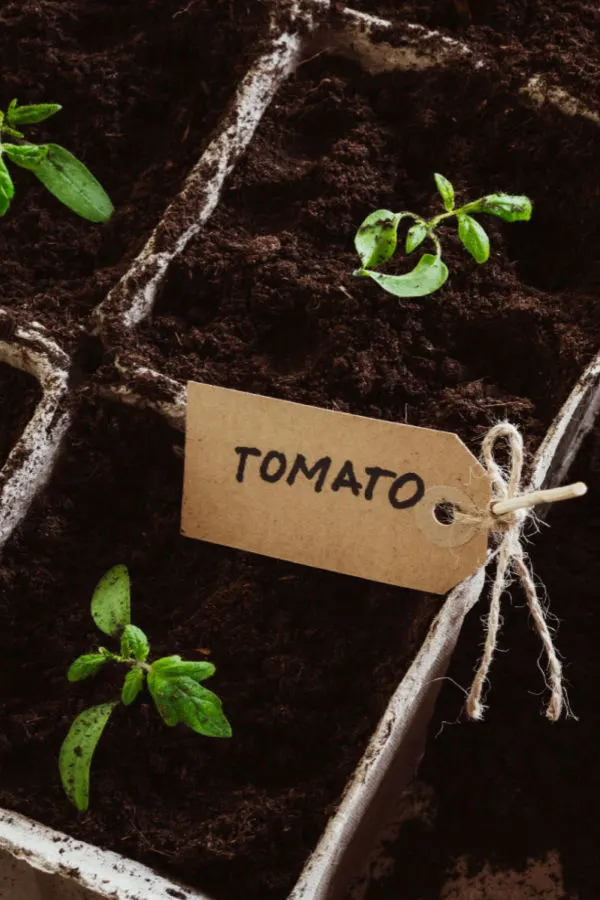Not only is it easy to save seeds from your tomato plants this summer – it can also help you grow your best tomato plants ever next year!
Saving seeds is certainly one of the best ways to save on your gardening budget. Let’s face it, seeds are only getting more and more expensive with each passing year. But there is more reason than ever to save seeds from your tomato plants – and it goes far beyond saving money!
By simply selecting seeds from the best tomatoes growing on your best plants this summer, you can greatly improve the quality of your seed stock. That can lead to stronger, healthier plants and a much larger harvest next year as well. And even better, tomatoes with more flavor than ever!

There is little doubt that by continuing to save seeds from your best tomatoes year after year, you can have a big impact on improving your tomato plants. With each passing year, the seeds and plants develop more and learn to adapt to the soil and conditions far better. And by selecting seeds from your top performers, you are saving seeds that are already performing well.
But when it comes to saving seeds, there are a few simple but key steps you must take to make sure your seeds are ready to sprout and grow next year. Here is a look at which tomato seeds you can save, along with how to collect, dry and store them successfully to plant again next year like a pro!
How To Save Tomato Seeds From Your Tomatoes – And Why Late Summer Is The Time For Saving Them!
Knowing Which Seeds You Can Save
When it comes to saving seeds from tomatoes, it’s important to first know that there are some varieties that will work- and some that won’t. And knowing the difference is critical to planting and growing the tomatoes you want to grow.
The seeds of open-pollinated tomatoes (heirloom tomatoes) can be saved. Hybrid tomato varieties on the other hand should not be saved. Why? Because heirloom tomato seeds are pure. This means the seeds you save from an open pollinated plant will grow to be the exact same plant – and more importantly, produce the exact same fruit.

The Issue With Hybrid Tomatoes – How To Save Tomato Seeds From Your Tomatoes
Hybrid tomatoes do not work in the same way. Hybrids are a cross of two or more tomato plants. They are bred to create a unique and new tomato plant and tomato.
Because of this, the seeds from a hybrid tomato will not replicate the hybrid when re-planted. Instead, they usually will revert back to one of the original tomato plants that were crossed to create it – or sometimes to a new mutation of it.
It often results in a plant that will not bear fruit or creates a completely different tomato. And that is not a good thing when you want to grow the same great-tasting tomato from year to year!
So how do you know if your seeds are heirloom or hybrid? The easiest way of course is to check the seed packet. They will almost always tell you if the variety is a hybrid or not. If that is not possible, you can always look up the variety on-line. Almost all seed companies list the particulars of each variety, including if it is an heirloom variety or not.

The Process – How To Save Tomato Seeds From Your Tomatoes
The tomato seed saving process is unique when compared to saving seeds from other vegetables. Tomato seeds have a protective gelatin coating on their outer skin.
When this coating stays intact, it makes it very difficult for the seed to germinate the following year. When a tomato plant grows uninterrupted in the wild, the fruit opens up and then falls to the ground. In doing this, the tomato slowly rots and decomposes.
As the tomato decomposes, the protective outer coat of the seed breaks down. This process of rotting actually helps prepare the seeds that fall for growing the following year. Once this layer is gone, it then allows for easy germination of the seed.
When saving your own tomato seeds, all you need to do is follow the same process. That means allowing the seeds to break down enough to have the protective coat removed. It might sound difficult to do, but the process is quite simple.

Saving Tomato Seeds – How To Save Tomato Seeds From Your Tomatoes
When saving tomato seeds, always begin by selecting a healthy, ripe tomato from your best plant. Whether saving seeds from a tomato, a pepper, or any vegetable, it’s best to save seeds from the healthiest vegetable on the best looking plant.
By selecting from the best stock, you ensure the best chance for good growth, health and success. It all comes down to good genetics. By selecting the best tomatoes, it strengthens the odds for the best traits to carry on.
Once you have your tomato, start by cutting it in half. Next, scoop out the pulp and seeds into a clean mason jar. There is no need to add any water or a lid, you need only the pulp and seeds.
Now it’s time to place the jar in a warm, humid location that is out of the way of everyday traffic. The goal here is to let the tomato rot for a few days. By placing it out of the way, you can also avoid the smell of a rotting tomato. One that usually isn’t too pleasant!

Breaking Down The Protective Coating – How To Save Tomato Seeds From Your Tomatoes
In a few days, the tomato pulp will begin to decompose. Usually, within five days, the pulp will start to display a white or green fuzzy mold. It can take a bit longer in some instances, but a little less than a week is usually a good rule of thumb for getting your seeds and pulp to begin molding.
Once the tomato pulp and seeds have mold covering most of the pulp, it’s time to take action. Begin by pouring water into the jar and wash off the mold. Repeat the process a few times until the seeds are clean.
Once clean, fill the jar one more time with water. The good seeds will sink to the bottom, allowing you to skim off the pulp and bad seeds. Once you skim off any remaining pulp and floating seeds, pour the water out. The seeds left are now ready to dry and save.
To dry, place the seeds out on a paper towel or newspaper for a few days. It’s very important to let tomato seeds dry completely before storing. This helps to maintain the seed’s vitality and allows it to store longer as well.
Once dry, put the seeds in a sealed plastic baggie or mason jar with a covered lid. Store in a cool, dry and dark location. If you have room, the refrigerator makes an excellent storage location for seeds.
Once garden season roll around – you’ll be ready to grow your best tomato plants ever! See our article: How To Know When To Start Tomato Plants Indoors – A Simple Formula For Perfect Timing!
This Is My Garden
Follow Our Facebook Page For Great Gardening Tips And Advice! This Is My Garden Facebook Page
This Is My Garden is a garden website created by gardeners, for gardeners. Jim and Mary Competti have been writing gardening, DIY and recipe articles and books and speaking for over 15 years from their 46 acre Ohio farm. They publish three articles every week, 52 weeks a year. Sign up today to follow via email, or follow along!
